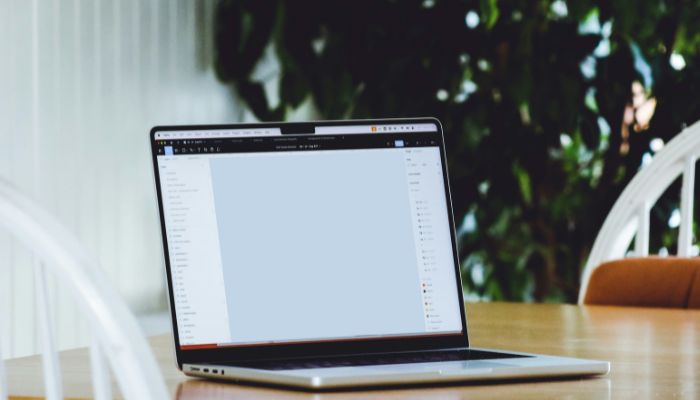
In today’s digital age, securing one’s email account has become a primary concern. As we utilize email platforms such as Outlook for various important tasks, it becomes crucial to recognize any signs of unauthorized access or hacking. This discussion “how to check if outlook email has been hacked” will shed light on the key indicators of a compromised Outlook account and the immediate steps to take in response to a breach.
Furthermore, we will explore additional preventive measures to ensure enhanced email security in the future. Join us as we navigate this important aspect of cybersecurity, including how to find Outlook users by phone number to verify identities in the event of suspicious activities.
Understanding Email Hacking
In the realm of digital communication, it is crucial to understand email hacking, as it is one of the most common methods cybercriminals use to compromise personal and business data. An email hack occurs when a malicious entity gains unauthorized access to an individual’s email account details, often with the intention of data theft or manipulation. This act is commonly referred to as email hijacking.
The advent of technology has provided hackers with sophisticated tools to infiltrate email accounts, increasing the risk of a compromised email. They employ tactics such as phishing, malware, and brute-force attacks to infiltrate accounts, exploit vulnerabilities, and steal sensitive data.
A hacker scam often involves using the hijacked email account to send out fraudulent emails to the victim’s contacts, often soliciting money or personal information. This can result in severe financial loss, reputation damage, and privacy breaches for the victim.
Understanding the fundamentals of email hacking is the first step towards creating robust security measures. Awareness of these practices can help individuals and businesses alike protect their data from cyber threats, promoting a safer digital environment.
Utilizing Identingly to Detect Hacked Outlook Emails
At Identingly our expertise in identity verification and access to extensive data might not directly diagnose a hacked Outlook email, but we offer crucial tools that can contribute to understanding and possibly identifying breaches.
- Identity Verification for Suspicious Activities: If you suspect your Outlook email has been hacked, actively check for any unknown or suspicious activities. Use our identity verification tools to investigate any phone numbers or personal details potentially connected to these activities and linked to the hacker.
- Database Checks for Related Information: In the event of a hack, it’s possible the perpetrator may have left traces or used the same contact information elsewhere. Our database, which includes a wide array of information such as email addresses and phone numbers, could help in tracking down these connections, providing more context to the breach.
While Identingly does not specialize in diagnosing hacked emails directly, our suite of services can assist in investigating and understanding the broader implications of a hacked Outlook email. We empower our users with the knowledge and tools to safeguard their digital identities.
Recognizing the Signs of a Hacked Email

Recognizing the signs of a compromised email account is a critical skill in maintaining your digital security. The first telltale sign is suspicious activity in your inbox. This could be in the form of emails that you don’t recognize, or an unexpected surge in spam emails.
Another sign is if your contacts start receiving emails from your account that you did not send. Hackers often use compromised email addresses to carry out a phishing attack, sending out malicious links and attachments to your contacts list.
Unfamiliar changes in your settings are also a sign of a hacked email account. This could be anything from a new signature, automated responses, or forwarding rules that you did not set up.
If you can’t log into your email account, it strongly indicates that someone may have compromised your email. Hackers often change the password to prevent you from regaining control.
Lastly, your email provider might alert you of suspicious activity. They have systems in place to track and notify users of unusual login attempts, especially from unrecognized devices or locations. All these signs indicate that your email account may have been hacked.
Immediate Steps to Take
If you suspect that someone has hacked your Outlook email account, taking certain measures promptly can help mitigate potential damage and secure your information. The world of email hacking is complex and can lead to compromised accounts, unauthorized purchases, and an influx of suspicious emails.
Firstly, verify any recent account activity. Look for unrecognized or suspicious actions such as password resets, emails sent or received, or settings changes. This will help you understand the extent of the breach.
Next, check your financial accounts for unauthorized purchases or suspicious activity. Email hackers often target financial information. If you notice any such activity, contact your bank or card provider immediately.
Then, inform your contacts about the situation. This step is crucial because hackers often send out phishing mails from compromised accounts to dupe your contacts into revealing their information.
Lastly, run a thorough scan of your device with a reliable antivirus software. Hackers might have installed malware on your device to gain access to your account.
Changing Your Outlook Password
Ensuring the security of your Outlook account necessitates the immediate step of modifying your current password. Changing your email passwords is a simple yet effective way of protecting your email accounts from unauthorized access.
To modify your Outlook password, you should follow these steps:
- Navigate to the Microsoft account security page and sign in using your email address.
- Select ‘Password security’.
- You will be prompted to verify your identity using two-factor authentication. This might involve receiving a code on your registered mobile number or alternate email.
- Once your identity is confirmed, you can input a new password.
- Save the changes.
It’s critical to create a strong, unique password that can’t be easily guessed. If you receive password reset emails without initiating them, it’s a sign that someone may be trying to hack your account. In such instances, immediately change your password and report the activity to Outlook’s support.
Enabling Two-Step Verification

After securing your account with a strong password, the next step towards fortifying your Outlook email’s safety is to enable two-step verification. This added security measure, also known as multi-factor authentication, provides an additional layer of protection beyond your email account password.
When you attempt an email login, two-step verification requires you to provide an additional proof of identity. This is typically a unique authentication code generated by a trusted device or received via SMS. The idea is that a hacker might steal your password, but it’s much harder for them to also have your trusted device.
Here are the additional steps to enable this security feature on your Outlook account. First, go to your account’s security settings. Select the option for two-step verification and follow the prompts. You will need to provide a phone number or an alternate email address where Microsoft can send your authentication codes.
Checking Your Account Settings
Regular scrutiny of your account settings is an indispensable step in maintaining the security of your Outlook email. This proactive approach enables you to spot any unexpected changes in your email settings or unauthorized rules that could compromise your account’s safety.
To ensure your Outlook email remains secure, follow these steps:
- Review your email settings: Regularly check your settings to identify any changes you didn’t make. This includes your signature, ‘out of office’ replies, and auto-forwarding settings.
- Check for unauthorized rules: Hackers often create rules in your inbox that can forward emails or move them to another folder. Be vigilant of any new inbox rules.
- Monitor your sent items: Keep an eye on your sent items to catch any unexpected emails sent from your account.
- Examine your login activity: Outlook allows you to review past login activity. If you notice unfamiliar locations or devices, this may indicate a breach.
- Update your account settings: Regularly update your account settings, including your password and recovery information, to bolster security.
Contacting Outlook Support

Despite your best efforts to maintain security, if suspicious activity persists on your Outlook account, it may be necessary to reach out to Outlook Support for professional assistance. Outlook, being one among the most preferred email service providers, especially for business email purposes, has an efficient support team that can help you navigate through potential security breaches.
If you suspect your email client has been hacked, perhaps due to an influx of phishing emails, or any unusual activity, it’s crucial to contact Outlook Support without delay. To do this, you can access their ‘Help’ section, typically found at the top of your Outlook page. From there, you can navigate to ‘Contact Us’ or ‘Support’ and follow the prompts to report your issue.
Outlook Support is equipped with advanced cybersecurity solutions, designed to protect users from hacking attempts and to restore compromised accounts. Their support staff can guide you through the necessary steps to secure your account, ensuring your personal and professional data remains protected. Remember, in the face of persistent suspicious activity, reaching out to professionals is the safest course of action.
Preventive Measures for Future Protection
To safeguard your Outlook account from future security threats, it is essential to adopt preventive measures. These steps will secure your email credentials and protect you from phishing scams, cyber attacks, and other online threats.
Here are five preventive measures for future protection:
- Update your passwords regularly: Changing your password every few months makes it harder for hackers to access your account.
- Enable two-factor authentication: This adds an extra layer of security to your account by requiring a second verification step.
- Beware of phishing scams: Always verify the source of an email before clicking on any links or downloading attachments.
- Install antivirus protection: This will help protect your device from malicious software that could steal your information.
- Keep your software updated: Regular updates often include security enhancements and patches for vulnerabilities.
Conclusion
Securing your Outlook email from potential hacking attempts involves constant vigilance and proactive measures. By recognizing signs of unauthorized activity and swiftly taking immediate steps, including outlook contact retrieval, changing passwords, enabling two-step verification, inspecting account settings, and reaching out to Outlook Support when necessary, users can better protect their accounts.
Moreover, adhering to preventive measures can fortify account security, ensuring that private information remains confidential and secure.
FAQs: How to Check if Outlook Email Has Been Hacked
How can I tell if my email address has been involved in an email hack?
Recognizing a compromised email address is crucial. Look for telltale signs like unexpected emails in your sent items or inbox. Suspicious activity such as strange emails, junk email, or spam messages can also be indicators. Regularly check your email account details, including the last IP address logged in from, to spot any unfamiliar locations or devices.
What are the best practices for setting strong passwords for email accounts?
For strong passwords, use a mix of uppercase and lowercase letters, special characters, and numbers. Avoid common phrases or easily guessable information like your social security number. It’s also wise to update your email passwords on a regular basis and not use the same password across multiple online accounts. Additionally, consider using a password manager to maintain complex passwords securely.
How does two-factor authentication enhance the security of my email service?
Two-factor authentication adds an extra layer of security to your email service. Even if someone discovers your email login credentials, they won’t be able to access your account without the second verification step, usually a code sent to your recovery email or phone. This method is especially useful to prevent unauthorized access to compromised accounts or in case of email hijacking.
What should I do if I receive phishing emails or suspect a phishing attack?
If you suspect a phishing attack from a phishing email, do not click any links or download attachments. Report the email as phishing to your email provider and delete it. Be cautious of emails that ask for personal information or direct you to a website to update your account details. Regular email attachment scanning and using cybersecurity solutions can help detect and mitigate such cyber threats.